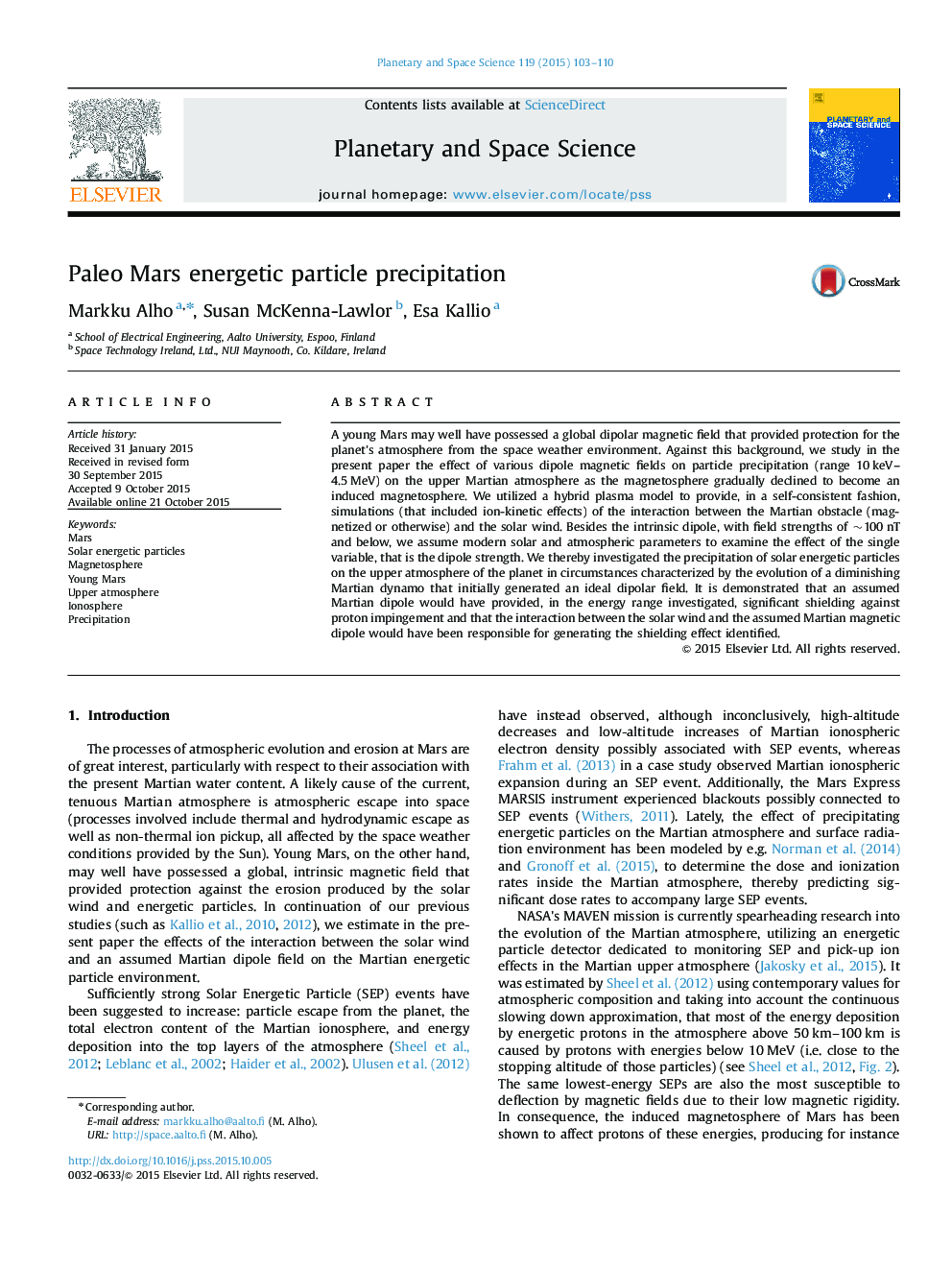| Article ID | Journal | Published Year | Pages | File Type |
|---|---|---|---|---|
| 8142940 | Planetary and Space Science | 2015 | 8 Pages |
Abstract
A young Mars may well have possessed a global dipolar magnetic field that provided protection for the planet׳s atmosphere from the space weather environment. Against this background, we study in the present paper the effect of various dipole magnetic fields on particle precipitation (range 10 keV-4.5 MeV) on the upper Martian atmosphere as the magnetosphere gradually declined to become an induced magnetosphere. We utilized a hybrid plasma model to provide, in a self-consistent fashion, simulations (that included ion-kinetic effects) of the interaction between the Martian obstacle (magnetized or otherwise) and the solar wind. Besides the intrinsic dipole, with field strengths of ~100 nT and below, we assume modern solar and atmospheric parameters to examine the effect of the single variable, that is the dipole strength. We thereby investigated the precipitation of solar energetic particles on the upper atmosphere of the planet in circumstances characterized by the evolution of a diminishing Martian dynamo that initially generated an ideal dipolar field. It is demonstrated that an assumed Martian dipole would have provided, in the energy range investigated, significant shielding against proton impingement and that the interaction between the solar wind and the assumed Martian magnetic dipole would have been responsible for generating the shielding effect identified.
Related Topics
Physical Sciences and Engineering
Earth and Planetary Sciences
Geophysics
Authors
Markku Alho, Susan McKenna-Lawlor, Esa Kallio,
